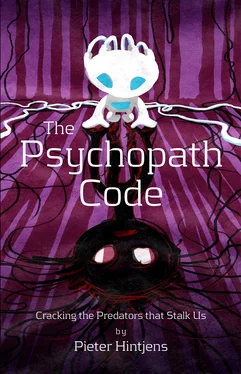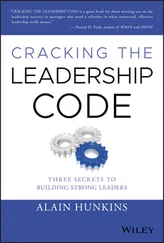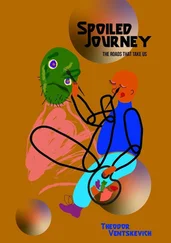Bob and Alice each hold a ledger in their minds. They keep a balance of gifts received and given. The more work it takes to calculate this balance, the more solid the bond feels. This is why the best gifts have no price tag. This is why money dissolves relationships like acid. This is why we can bond with a limited number [41] https://en.wikipedia.org/wiki/Dunbar%27s_number
of people. Our mental capacity is 150 ledgers, more or less.
The bookkeeping is delicate. We don’t know the value of our gift to others. There are many intangibles like genetic closeness. We don’t know the cost of their gifts to us. So we track the value of the gifts we received and the gifts we give. "He saved my life!" and "I gave her my last chicken." It is a one-sided ledger.
Further, we cannot read the other’s ledger. We have to guess it. If we see the other person happy to see us, we assume our credit is good. Then we take our own valuation. If the other person is unhappy, we invest more until they are happy again. Then we again take our own valuation. If we feel we’re getting too little from the other person, we become unhappy with them, and we dislike them.
You can see how the social emotions of like and dislike evolved. They are the language of social accounting. You can see why we read and interpret these emotions using empathy. You can see why empathy for these emotions is an adult mental tool. Juveniles do not take part in the risk sharing. We do not keep ledgers for juveniles, nor do we expect them to do that for us.
Social accounting achieves two things. First, it lets us detect and punish cheats. That takes no conscious thought. The ledger is out of balance. We dislike the cheats and then become angry with them. If they make enough effort, we become happy, and we like them again. If not, we stop sharing with them. Second, it lets us rank others from most to least important. Meaning, most to least likely to look after us when we are unlucky.
As such, social accounting is a good defense against cheats. I’d guess this mechanism evolved many millions of years ago. It is essential for high-risk hunting by larger groups (and I’d predict the same mechanisms in other social top predators).
Somewhat later, we evolved the ability to plan the future, and make promises. We often make and accept promises of future rewards, or just "futures". Futures are a large part of social accounting. It is how we stretch our risk balancing strategy forwards in time.
Like all gifts, we measure futures in the silence and privacy of our own minds. It is a bad tactic to tell others how you measure them, unless you dominate them. In the same way it is bad practice to tell others the futures you expect of them. Every relationship is a slow game, a negotiation. One does not show one’s cards.
So when someone promises or reveals a future, that is a trigger. As the future gets larger, our response grows. When the reveal is modest, and thus looks sincere, our response grows. These futures tend to be basic: sexual gratification, protection, affection, time, resources, opportunities, contacts.
The further a future, the higher the risk of default and effort of enforcement. So we discount futures, using a hyperbolic curve [42] http://en.wikipedia.org/wiki/Hyperbolic_discounting
. We discount a lot at first, then less over time. The closer the future, the higher we value it.
Somewhere close to the evolution of futures, we evolved the ability to lie. As I’ve said, Mallory is a professional liar. She is not just a good liar. She is a better-than-perfect liar. It is the key to her long-term success. Whereas Bob feels stress at lying, Mallory feels none. She fears no consequences. When Bob lies, he places his relationships at risk. Mallory has a different accounting model.
So to hack Bob’s social accounting, Mallory lies about futures. Bob adds those futures to his ledger, and values the relationship higher. It sounds simple, yet that evolution must have taken hundreds of thousands of years. Presumably the necessary genes evolved in parallel with the genes for language.
Mallory meets Bob and reveals some future. She then asks for help, playing the victim. Bob starts to share. Mallory shows larger futures. Bob invests more. Mallory contrives a crisis, and makes it Bob’s fault. He responds by investing more. He now values the relationship higher. Mallory gives a little, then repeats the cycle. She breaks the relationship again, and Bob repairs it, again. She can make Bob see this as the primary relationship in his life. He will sacrifice everything to make it work. It only ends when Bob is empty.
Futures tend to be massive compared to sincere investments. This means the bond works much faster than a normal social bond. In a typical case it takes only a few days for Mallory to hook Bob. It will take her only a few months to become the most important person in his life.
Over time, Mallory replaces the futures with Bob’s debts. The advantage for her is that he can never pay them off. She controls that ledger, and no matter what he does, she adds new debts to it. The sooner she can do this, the sooner she can focus on other targets.
Sunk costs and future promises are the basis for many confidence tricks. The archetype is the Spanish Prisoner [43] https://en.wikipedia.org/wiki/Spanish_Prisoner
aka Nigerian advance-fee fraud. This is the backbone of the abusive bond. Even when Bob is bleeding empty, he will deny that Mallory is dishonest.
What do Mallory’s ledgers look like? How does a psychopath do social accounting? In broad terms, they do not. They use different mechanisms to track their relationships. To start with, Mallory can hold many more ledgers than Alice. His Dunbar number is in the many hundreds. He does not track gifts. He does value his relationships relative to each other. He definitely knows who is most likely to feed him.
Mallory’s ledger for Alice tracks the flow of resources from her to him. It tracks issues she appears to be sensitive to. Alleged crimes she has committed, that he can use as leverage. Often when he talks to Alice it is to try new accusations, and revisit old ones to see if they still work.
You can see that this ledger is not negotiated. Alice cannot get Mallory to change by being happy, nor angry. Her social instincts work against her.
This bond can last years, even a lifetime. Seen from the outside, it is incomprehensible and immoral. Yet it seems an inevitable consequence of the social accounting instincts. Evolution doesn’t try to make everyone happy. It plays the averages. If 10% suffer so 90% can thrive, so be it.
Yet there are clear ways to escape this bond, no matter what stage it is in. I will come to this later. The suffering is only inevitable as long as Alice believes Mallory to be sincere.
"If you pick up a starving dog and make him prosperous he will not bite you. This is the principal difference between a dog and man." — Mark Twain
The third trigger is parental abuse.
As Mark Twain observed, the more someone invests in us, the less we value them. A visible effort by the other person diminishes them in our eyes. If a dominant man is generous to a submissive man, he creates a challenger. The submissive male sees the dominant male as weak and needy. Instead of affection, he feels antagonism and rebellion. This is our ancient primate mind at work, fighting its way up the group hierarchy.
Parental abuse triggers the opposite effect. It is the bond that children have with abusive parents. Mistreatment comes in many forms. It can come as verbal, emotional, or physical violence. It can come as physical confinement. It can be negligence of basic needs. It can be disregard for social cues and needs. We would expect children of abuse to hate and detest their parents. Instead, they tend to bond hard. They identify with their parents, defend them, excuse them, and follow them. The bond only breaks, if ever, when the children are adults.
Читать дальше












